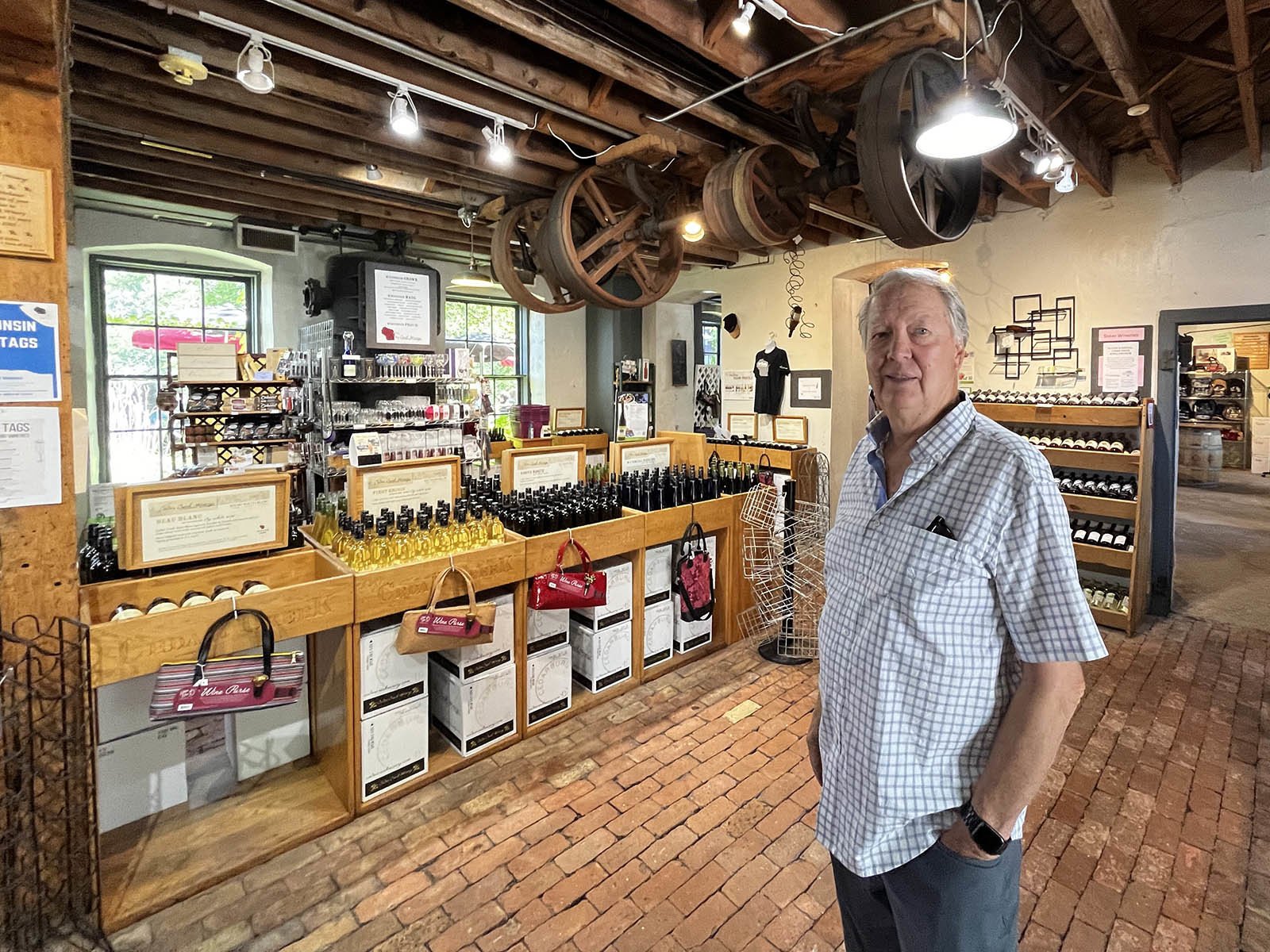
A piece of history
EST. 1864
Beginnings
Diedrich Wittenberg was born in Hanover, Germany in 1834. In 1844 he and his family immigrated to America and arrived in Cedarburg in 1845. In his early life, he worked on his parents’ farm and then when he was 21, he worked for Frederick Hilgen as a teamster for the Hilgen and Schroeder grist mill. In 1864, when he was 30 years old, Wittenberg, along with Joseph Trottman, began working on the construction of the woolen mill. In 1865, Joseph Trottman traded his interest in the woolen mill to Frederick Hilgen and thus the mill was named Hilgen and Wittenberg Woolen Mill. The mill cost $30,000 to build and was financed by Frederick Hilgen.
Growth
Located on Cedar Creek, the mill was powered by water driving a turbine producing 50 horsepower. The Mill produced yarns, blankets, flannels, socks, and mackinaws. The company employed 45 people and had revenue of about $100,000. The mill contained 12 broad and narrow looms, and 3 knitting machines for scarves, caps and socks. The work was divided into departments with the basement for finishing and dying. The first floor contained 4 sets of carding machines and the second floor weaving and spinning. In 1874, the mill was incorporated into the Cedarburg Woolen Mill with Diedrich Wittenberg as president.
In 1873, the mill doubled in size adding a gabled roof addition and added additional machinery purchased from England, for the
purpose of producing worsted products.
IN WITH THE NEW
In 1896 a steam boiler was purchased to provide power and the water power was abandoned. The boiler room is now occupied by the Anvil Restaurant. In 1897 a direct current electric generator was purchased and thus provided the first electricity in Cedarburg. This generator also provided electric power to the homes of Fred Wittenberg, Diedrich Wittenberg and William Roebken Sr. the mill owners. In 1908 a full 3rd floor was added to the mill.
BECOMING CEDAR CREEK SETTLEMENT
During the war years the mill was a major supplier of wool blankets for the war effort. In 1945 the mill stopped its weaving operation and stopped making blankets. After World War II the mill continued specialty hand weaving yarns and other items like caps and tassels for the wholesale trade.
In 1969 the mill ceased operations and was put up for sale. The Wittenberg family, headed by Carl Wittenberg, accepted an offer from developers who wanted to tear the mill down and put up a gas station. Stephen Fischer, the mayor of Cedarburg at the time, was a preservationist and asked Carl Wittenberg to allow him 6 months to find an alternative buyer to preserve the buildings. That 6 month period ended in February of 1972.
In the fall of 1971 I began looking for a place to relocate the winery I had started in Milwaukee in April of 1971.
Mayor Stephen Fischer met another person interested in purchasing and
restoring the mill. That person was Bill Welty. He and I were able to agree on an offer and that offer was accepted. We were able to purchase the mill in January of 1972.
At that time the mill had been empty for almost two years and the roof leaked, many windows over 800 were broken and the mill was a cold dank place.
I immediately began working on the winery by building a small room in the cellar which we could heat to ferment wine. At the same time we removed the boilers and salvaged the brick which we used for the floor of the wine shop. In May of 1972 we were able to open the wine shop and tasting room to the public.
In 1973, shops on the first floor were added, and in 1974 I added shops on the second floor and in 1978 completed the 3rd floor as artists’ studios and limited retail.
The mill in those years became a major tourist destination and helped bring vitality to downtown Cedarburg.
As part of our marketing effort we decided to make festivals a major focus. In September of 1973 we held our first Wine Harvest Festival. In February of 1974 we added the Winter Festival. In June of 1986 we added the first Strawberry Festival.
In 1990 I sold the winery to Bob Wollersheim who also owned a winery in Prairie du Sac. It was then that the Stone Mill winery was
renamed Cedar Creek Winery.
In 2008 I converted the blacksmith shop (the boiler room) to a restaurant in conjunction with the Taylor family. Today that space is operated as the Anvil Pub and Grill.
Notes on the history of the Wittenberg Woolen Mill from Jim Pape




